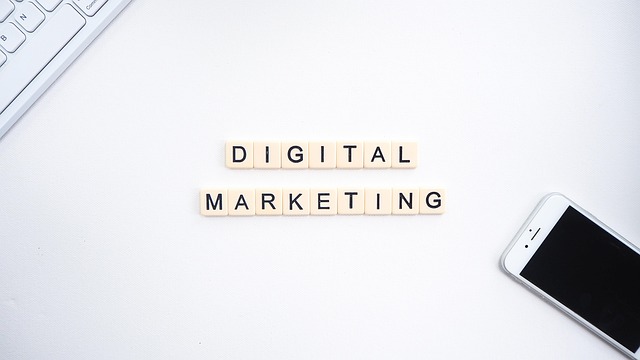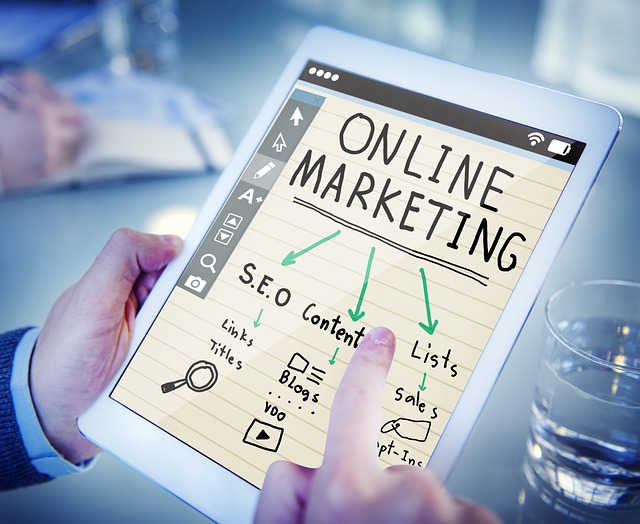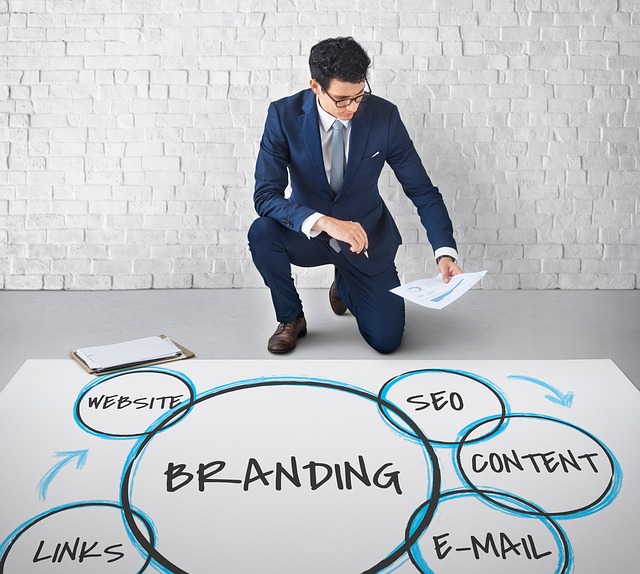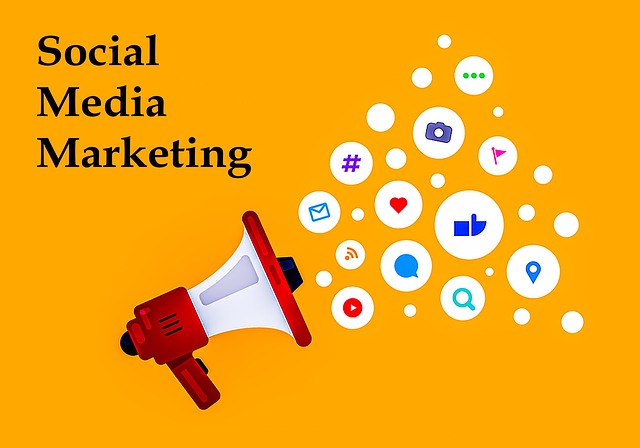
1. Wider Reach and Increased Visibility
Digital marketing allows your business to extend beyond local boundaries and connect with a global audience. Platforms like social media, search engines, and email give you the power to engage customers around the world. With Pixel and Profit at the core of your strategy, your brand becomes visible to the right people, at the right time.
2. Cost-Effective
Compared to traditional channels such as TV ads, print media, or billboards, digital marketing offers a more affordable path. For small businesses especially, the Pixel and Profit approach means promoting your brand without a massive financial burden. With tools like Google Ads or Facebook Ads you can set modest budgets and monitor ROI in real time.
3. Highly Targeted Marketing
One major advantage of digital marketing is audience targeting. Platforms like Facebook, Google, and Instagram let you filter by demographics, interests, behaviours, and location. When you apply Pixel and Profit thinking, your campaigns focus on those most likely to convert, increasing efficiency and outcomes.
4. Measurable Results and Data Analytics
Digital marketing delivers clear, real-time analytics on campaign performance. Metrics like CTR (click-through rate), website traffic, engagement, and conversions are within reach. With Pixel and Profit, you’re leveraging data to refine campaigns, make smarter decisions, and maximise your return.
5. Building Brand Awareness and Trust
Consistent presence online—via content marketing (blogs, videos, infographics) and social media engagement—helps you build awareness. If you adopt the Pixel and Profit mindset, you’ll deliver value, build trust, and convert casual visitors into loyal customers.
6. Engagement and Relationship Building
Digital marketing enables direct interaction with your audience. Through social media, email, and feedback channels you can listen, respond, and build relationships. When your strategy is aligned to Pixel and Profit, you’re not just selling—you’re fostering a community around your brand.
7. Better Customer Insights
Tools like Google Analytics and social media insights reveal your customers’ behaviour, preferences, and needs. With Pixel and Profit as your guide, you’ll tailor your marketing messages and product offerings to match your audience more precisely.
8. Improved Customer Experience
By creating a personalised journey—via targeted emails, customised ads, and user-friendly websites—you enhance the customer experience. Using Pixel and Profit-driven tactics means that each customer interaction becomes more relevant and satisfying.
9. 24/7 Availability
Unlike purely in-person businesses bound by hours, digital marketing lets you reach customers around the clock. With an e-commerce presence and automated campaigns, Pixel and Profit mentality ensures your brand is always “on”, giving you extra chances to convert.
10. Competitive Advantage
In a marketplace crowded with competitors, businesses that use digital marketing strategically can gain a real edge. When you apply Pixel and Profit, you stand out—consistently, smartly, and ahead of the curve.
11. Adapting to Trends
Digital marketing gives you agility. Whether it’s a new social platform or a shift in customer behaviour, you can adjust quickly. With Pixel and Profit, you’re ready for change—remaining relevant, dynamic, and ahead of your market.
Key Benefits for Businesses: The Complete Guide by Pixel and Profit
Digital marketing isn’t just a modern trend—it’s the engine that drives today’s most successful businesses. When applied through the Pixel and Profit strategy, it transforms how companies attract, engage, and retain customers. Below are the core benefits of digital marketing for businesses, explained in detail.
1. Increased Brand Awareness
The first and most important benefit of digital marketing is brand visibility. Through SEO, social media, and content marketing, your business can reach audiences who are already searching for your products or services.
At Pixel and Profit, we believe that visibility is the foundation of profitability. The more visible your brand becomes across Google, Instagram, YouTube, and Facebook, the stronger your brand authority grows. Consistent posting, keyword optimization, and engaging storytelling help position your business as an expert in your niche.
When customers see your brand repeatedly through Pixel and Profit-style strategies, they start trusting you—trust that later turns into sales.
2. Cost-Effective
Traditional marketing (like print or TV ads) demands a huge budget but doesn’t guarantee measurable results. Digital marketing, on the other hand, offers targeted, affordable, and trackable campaigns.
The Pixel and Profit approach focuses on maximum output with minimal spending. You can start small—boosting a Facebook post for ₹500 or running Google Ads for ₹1,000—and still reach thousands of people.
What makes Pixel and Profit powerful is its data-driven optimization. You can pause, tweak, or scale campaigns based on real-time performance. This kind of flexibility means you’re always in control of your marketing budget.
3. Targeted Marketing
One of the standout advantages of digital marketing is its precision targeting. You can define your ideal customer by demographics, location, interest, and even behaviour.
Using Pixel and Profit, businesses can create buyer personas—profiles of their perfect customers—and tailor ads that speak directly to them.
For instance, if you’re selling sunglasses, you can target 18–35-year-olds who have shown interest in fashion and accessories. The result? Higher engagement, better leads, and increased conversion rates.
That’s the Pixel and Profit difference—smart marketing that finds the right person at the right time.
4. Real-Time Results and Analytics
Unlike traditional advertising, where results are often based on guesswork, digital marketing provides real-time insights. You can monitor website traffic, ad clicks, social engagement, and conversion rates instantly.
Through Pixel and Profit analytics tools like Google Analytics, Meta Business Suite, and Search Console, you can measure:
- How many people visit your website
- Which channels drive the most traffic
- Which campaigns deliver the highest ROI
This data helps you make quick, informed decisions—reducing waste and boosting profit. Every click, impression, and engagement tells a story, and Pixel and Profit helps you decode it.
5. Increased Engagement
Digital marketing encourages two-way communication. Instead of just pushing ads, you can interact with your audience directly through comments, messages, and polls.
At Pixel and Profit, we believe engagement builds emotion—and emotion builds loyalty. When people engage with your posts, share your content, or tag your brand, your visibility and credibility multiply.
This human connection strengthens customer relationships and turns your business into a trusted brand community.
6. 6. Better Customer Insights and Personalisation
nderstanding your customers is key to business success. With Pixel and Profit methods, you gain deep customer insights through tools that track user behaviour, preferences, and buying patterns.
You’ll know what your audience likes, what time they’re most active, and what content drives them to take action. With this information, you can deliver personalised marketing experiences—emails, recommendations, or retargeting ads that feel tailor-made.
Personalisation powered by Pixel and Profit doesn’t just increase sales; it makes your customers feel valued.
7. Improved Customer Experience
In today’s world, customers expect fast, smooth, and enjoyable digital experiences. Digital marketing helps businesses deliver that—through responsive websites, mobile-friendly design, and instant communication via chatbots or WhatsApp.
By applying Pixel and Profit principles, you can craft an online journey where customers move effortlessly from awareness to purchase. Every interaction—from clicking an ad to checking out—is designed for satisfaction.
A seamless customer experience equals repeat business and word-of-mouth referrals—the most powerful marketing tool of all.
8. Higher Conversion Rates and ROI
The ultimate goal of marketing is profit. With digital campaigns powered by Pixel and Profit, you can track exactly how many people clicked, signed up, or purchased.
Every rupee you spend online can be measured against results. This transparency ensures your marketing always delivers a positive return on investment (ROI).
From Facebook ads that drive traffic to Google Ads that convert leads—Pixel and Profit helps you maximise every penny.
9. Competitive Advantage in a Digital World
Most companies are online today—but not all are doing it right. That’s where Pixel and Profit gives you an edge.
By using advanced marketing tools, keyword optimization, and creative content, you stay ahead of your competitors. You can analyse what they’re doing, identify gaps, and fill them with better offers or stronger branding.
The digital world rewards the smart and the fast—Pixel and Profit helps you be both.
10. Better Customer Insights and Personalisation
Understanding your customers is key to business success. With Pixel and Profit methods, you gain deep customer insights through tools that track user behaviour, preferences, and buying patterns.
You’ll know what your audience likes, what time they’re most active, and what content drives them to take action. With this information, you can deliver personalised marketing experiences—emails, recommendations, or retargeting ads that feel tailor-made.
Personalisation powered by Pixel and Profit doesn’t just increase sales; it makes your customers feel valued.
11. Global Reach and 24/7 Availability
The internet has no closing time. Whether it’s midnight in India or morning in the U.S., your business can still make sales online.
The Pixel and Profit strategy ensures that your website, social media, and online store are always working—even while you sleep. Automated systems handle inquiries, emails, and ads, so you don’t miss a single opportunity.
13. Improved Customer Experience
In today’s world, customers expect fast, smooth, and enjoyable digital experiences. Digital marketing helps businesses deliver that—through responsive websites, mobile-friendly design, and instant communication via chatbots or WhatsApp.
By applying Pixel and Profit principles, you can craft an online journey where customers move effortlessly from awareness to purchase. Every interaction—from clicking an ad to checking out—is designed for satisfaction.
A seamless customer experience equals repeat business and word-of-mouth referrals—the most powerful marketing tool of all.
15. Enhanced Brand Loyalty and Retention
Digital marketing isn’t just about attracting customers—it’s also about keeping them. Through consistent engagement, personalised offers, and excellent support, you build loyalty.
At Pixel and Profit, we focus on long-term relationships, not just short-term gains. When customers trust your brand, they buy again, recommend you to others, and become your brand ambassadors.
Loyal customers are more profitable, and loyalty comes from authentic connection, which Pixel and Profit helps you create.
The 4 Ps of Digital Marketing through a Pixel and Profit Lens
1. Enhanced Product Experience
Online platforms let you show products via videos, high-quality images, reviews. With Pixel and Profit, you emphasise trust, transparency, and information to convert
2. FLEXIBLE & COMPETITIVE PRICING
Digital tools let you experiment with pricing, discounting, freemiums. Use the Pixel and Profit mindset to adjust based on demand and behaviour.
3. BROADER MARKET REACH (PLACE)
Digital marketing removes physical boundaries. Your product can be available through websites, apps, marketplaces, or social media stores—24/7, worldwide. This maximizes your reach and makes purchasing easier for customers.
4. POWERFUL PROMOTION STRATEGIES
Use SEO, social media marketing, email campaigns, influencer partnerships, and PPC ads to reach the right audience at the right time. Digital promotions are data-driven, targeted, and cost-efficient, ensuring a higher return on investment.
The Power of Personalization in Digital Marketing

1. INCREASED CUSTOMER ENGAGEMENT
Personalized content grabs attention. Whether it’s product recommendations, tailored emails, or dynamic website experiences—people respond better when they feel the message is made just for them.
2. HIGHER CONVERSION RATES
When users see content that matches their interests and behavior, they’re more likely to take action. Personalized calls-to-action and offers lead to significantly better conversion rates than generic messages.
3. STRONGER CUSTOMER LOYALTY
Personalization builds relationships. When customers feel understood and valued, they’re more likely to return, repurchase, and become brand advocates.
4. BETTER CUSTOMER INSIGHTS
Personalization is fueled by data. As you customize content and offers, you also gain deeper insights into customer preferences, habits, and trends—allowing for even more effective marketing strategies.
5. REDUCED BOUNCE RATES
Relevant content keeps users on your site longer. Personalized landing pages, product suggestions, and content feeds lower bounce rates and improve the overall user experience.
How to Build a Social Media Strategy for E-commerce Brands
1. DEFINE YOUR GOALS CLEARLY
Start by deciding what you want to achieve—brand awareness, website traffic, lead generation, or direct sales. Clear goals guide your entire content and ad strategy.
2. KNOW YOUR TARGET AUDIENCE
Understand who your customers are—age, gender, location, interests, shopping behavior. Use platform insights and buyer personas to tailor content that resonates and drives action.
3. PICK THE RIGHT PLATFORMS
Don’t try to be everywhere. Choose platforms where your audience hangs out most—Instagram and Facebook for fashion, Pinterest for home decor, LinkedIn for B2B, etc.
4. CREATE HIGH-QUALITY, CONSISTENT CONTENT
Use a mix of product photos, videos, testimonials, behind-the-scenes clips, and educational content. Stick to a consistent brand tone and posting schedule to build trust and familiarity.
5. LEVERAGE INFLUENCER MARKETING
Collaborate with influencers who align with your brand. Micro-influencers, in particular, often bring high engagement and trust from niche communities at a lower cost.
6. USE PAID ADS TO BOOST REACH & SALES
Run targeted ad campaigns using Facebook Ads, Instagram Ads, or TikTok Ads. Retarget users who visited your site or added products to the cart but didn’t purchase.
7. ENGAGE WITH YOUR AUDIENCE
Respond to comments, DMs, and reviews promptly. Host polls, Q&As, and giveaways to encourage interaction and build community around your brand.
8. TRACK PERFORMANCE & ADJUST STRATEGY
Use tools like Meta Business Suite, Google Analytics, or social media dashboards to monitor performance. Track metrics like engagement rate, conversion rate, and ROI—and optimize regularly.
The Benefits of Long-Form Content in SEO Strategy

1. HIGHER SEARCH ENGINE RANKINGS
Search engines favor in-depth content that thoroughly answers user queries. Long-form articles naturally include more keywords, context, and value—boosting your chances of ranking on the first page of Google.
2. INCREASED DWELL TIME
The longer and more engaging your content, the longer users stay on your site. This signals to search engines that your page is valuable, helping improve your SEO performance even further.
3. MORE BACKLINK OPPORTUNITIES
Long-form content is often seen as more authoritative and comprehensive, making it more likely to be referenced by other websites—earning you valuable backlinks that strengthen your domain authority.
4. BETTER USER VALUE & TRUST
Deep, well-researched content builds credibility. When users find your content helpful and informative, they’re more likely to trust your brand and return for more.
5. GREATER CHANCE TO RANK FOR MULTIPLE KEYWORDS
With more words, you can naturally incorporate a wider range of related keywords and search intents. This allows your content to appear in various search results, increasing visibility.
6. STRONGER INTERNAL LINKING STRUCTURE
Long-form content allows for strategic internal links to other pages on your site. This improves site navigation, spreads SEO value across your website, and keeps visitors engaged longer.
Understanding Customer Journey Mapping for Better Targeting

1. IDENTIFY TOUCHPOINTS THAT MATTER
Mapping the customer journey helps you pinpoint every interaction a customer has with your brand—before, during, and after purchase. This clarity allows you to optimize each step for a smoother, more personalized experience.
2. CREATE CONTENT FOR EACH STAGE
A clear journey map reveals what your customer needs at every stage—awareness, consideration, decision, and post-purchase. You can tailor your messaging and content to match their mindset, increasing engagement and conversions.
3. IMPROVE TARGETING AND AD SPEND EFFICIENCY
By understanding your customer’s path, you can serve ads and content at the right time and place. This precision reduces wasted spend and ensures you reach the right people with the right message.
4. UNCOVER PAIN POINTS & FIX GAPS
Journey mapping exposes friction points—like slow loading times, confusing checkout processes, or lack of information—that can lead to drop-offs. Fixing these boosts satisfaction and retention.
5. PERSONALIZE THE CUSTOMER EXPERIENCE
When you understand your customer’s behavior and emotions at each stage, you can deliver highly personalized experiences—from tailored emails to relevant product suggestions—that build stronger relationships.
6. ALIGN YOUR TEAM AROUND THE CUSTOMER
Customer journey maps give sales, marketing, and customer support a shared view of the customer experience. This alignment leads to more consistent messaging, better service, and a stronger brand.
How to Use Data Analytics for Smarter Marketing Decisions
1. TRACK WHAT MATTERS MOST
Use tools like Google Analytics, Meta Insights, and CRM dashboards to monitor key metrics—traffic, conversions, bounce rate, ROI. Focus on data that aligns directly with your goals.
2. UNDERSTAND YOUR AUDIENCE BETTER
Analytics reveals who your customers are—age, location, interests, and behaviors. Use this data to create more relevant content, offers, and ad targeting that truly resonate.
3. OPTIMIZE CAMPAIGNS IN REAL TIME
Don’t guess—analyze. Track how ads, emails, and content are performing and make quick adjustments to improve results. Data helps you stop what’s not working and double down on what is.
4. PERSONALIZE MARKETING AT SCALE
Analytics allows you to segment your audience and deliver personalized experiences—like dynamic emails or product recommendations—based on real user behavior.
5. FORECAST FUTURE TRENDS
With tools like predictive analytics and trend tracking, you can anticipate customer needs, prepare for seasonal changes, and make data-driven decisions about product launches or campaign timing.
6. IMPROVE CUSTOMER RETENTION
Analyze post-purchase behavior to understand why customers leave or stay. Use these insights to refine your loyalty programs, support strategies, and customer communications.
Maximizing ROI with Google Ads in 2025
1. TARGET THE RIGHT AUDIENCE
Use Google’s advanced targeting options—like in-market audiences, custom intent, and demographic filters—to reach users who are most likely to convert, minimizing wasted spend.
2. OPTIMIZE YOUR KEYWORDS
Focus on high-intent, long-tail keywords that match buyer search behavior. Regularly update your negative keyword list to avoid irrelevant clicks that drain your budget.
3. LEVERAGE AUTOMATED BIDDING STRATEGIES
Use Google’s smart bidding options like Target ROAS or Maximize Conversions. These use machine learning to adjust bids in real time, improving campaign efficiency and ROI.
4. CREATE COMPELLING ADS WITH STRONG CTAs
Craft clear, benefit-focused ad copy with strong calls-to-action. Use ad extensions (sitelinks, call buttons, reviews) to increase visibility and improve click-through rates.
5. TEST AND REFINE CONTINUOUSLY
Run A/B tests on headlines, descriptions, landing pages, and bidding strategies. Use data to optimize for the best-performing combinations and pause underperforming ads.
6. IMPROVE LANDING PAGE EXPERIENCE
Ensure your landing pages load fast, are mobile-friendly, and deliver a seamless experience. Align your ad message with the landing page content to boost conversion rates.
7. TRACK AND ANALYZE PERFORMANCE METRICS
Use Google Analytics and Google Ads reports to monitor CTR, conversion rate, cost per acquisition (CPA), and ROAS. Make data-driven decisions to scale successful campaigns.
Top Conversion Rate Optimization (CRO) Tips for Digital Marketers
1. SIMPLIFY YOUR USER EXPERIENCE
Make navigation intuitive and minimize distractions. A clean, straightforward path to purchase helps visitors complete desired actions faster.
2. USE STRONG AND CLEAR CALL-TO-ACTIONS (CTAs)
Your CTAs should be visible, action-oriented, and tell users exactly what to do next—like “Buy Now,” “Get Your Free Trial,” or “Sign Up Today.”
3. OPTIMIZE LANDING PAGES FOR SPEED AND MOBILE
Ensure your pages load quickly and display perfectly on all devices. Slow or clunky pages drive visitors away and hurt conversions.
4. LEVERAGE SOCIAL PROOF
Add testimonials, reviews, ratings, and trust badges. Showing that others trust and love your product boosts credibility and encourages conversions.
5. USE A/B TESTING REGULARLY
Test headlines, images, colors, button placements, and offers to discover what resonates best with your audience and improves conversion rates.
6. PERSONALIZE THE USER JOURNEY
Use data to tailor content, offers, and recommendations for individual visitors. Personalization makes users feel valued and increases the likelihood of conversion.
7. REMOVE FRICTION IN THE CHECKOUT PROCESS
Simplify forms, reduce the number of steps, offer guest checkout, and clearly display shipping and return policies to avoid cart abandonment.
8. PROVIDE MULTIPLE PAYMENT OPTIONS
Offer a variety of secure payment methods to cater to different customer preferences, reducing barriers at the final purchase step.
Why Social Proof is Essential for Increasing Online Sales

1. BUILDS TRUST AND CREDIBILITY
When potential customers see reviews, testimonials, or endorsements from others, it reduces their hesitation and builds confidence in your brand and products.
2. REDUCES PERCEIVED RISK
Buying online can feel risky. Social proof reassures buyers by showing that others have had positive experiences, making them more comfortable to purchase.
3. INFLUENCES BUYING DECISIONS
People often follow the crowd. Seeing that many others have bought and liked your product encourages new customers to do the same.
4. INCREASES CONVERSION RATES
Websites with visible social proof typically see higher conversion rates because visitors feel more assured and motivated to act.
5. BOOSTS BRAND REPUTATION
Positive reviews and user-generated content enhance your brand image and differentiate you from competitors in a crowded market.
6. GENERATES VALUABLE FEEDBACK
Social proof isn’t just for sales—it provides insights into customer preferences and areas to improve, helping you refine your products and marketing.